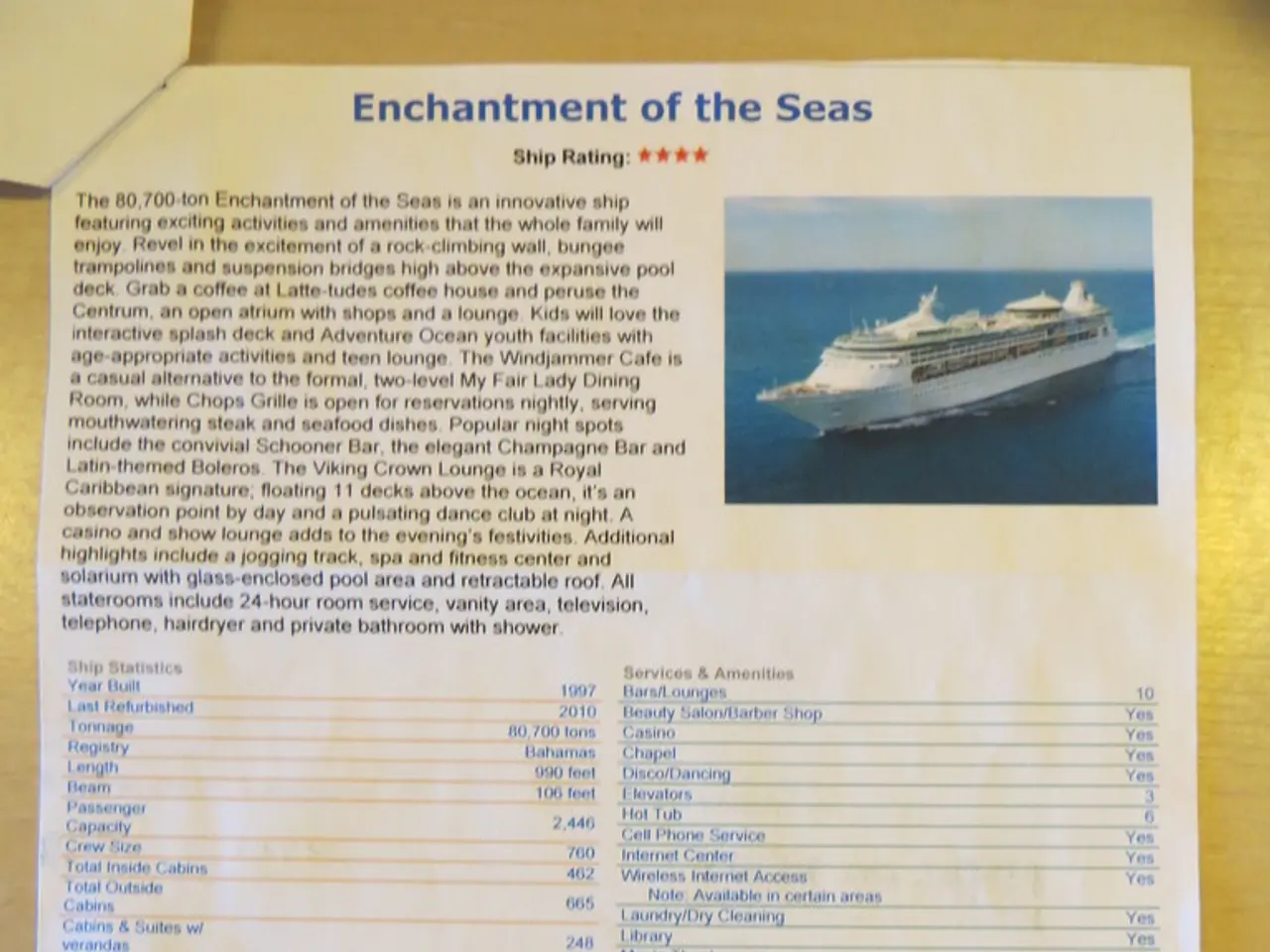Global Cooperation at the International Centre for Electronic Navigational Charts (IC-ENC), Emphasizing Regional Importance
The International Centre for Electronic Navigational Charts (IC-ENC), a Regional Electronic Navigational Chart (ENC) Coordination Centre (RENC), plays a pivotal role in the global transition to digital navigation. IC-ENC, with its 53 member countries, supports the production and distribution of high-quality ENCs to mariners worldwide.
As a RENC, IC-ENC acts as a centralised body, overseeing ENC validation, quality control, and distribution. Its organisational structure comprises a team of professionals who ensure adherence to International Hydrographic Organization (IHO) standards and collaborate with other international bodies to support harmonised global ENC coverage essential for Electronic Chart Display and Information Systems (ECDIS).
The IC-ENC's primary function is to support its member countries, contributing to the standardisation and widespread accessibility of ENCs. These ENCs comply with IHO specifications for electronic charting, enabling mariners to transition from traditional paper charts to digital navigation systems that integrate GPS and other navigational aids, enhancing maritime safety and efficiency on a global scale.
The quality assurance process at IC-ENC is harmonised globally, using cloud technology, yet with a significant 'human touch' from expert validators. ENCs are uploaded to real ECDIS machines, inconsistencies are recorded, and assessed by the trained international team. The validation reports, including suggested improvement action, are provided to the producer as part of an iterative process for quality improvement.
IC-ENC operates with a regional approach, having offices in Australia since 2005, Niteroi in Brazil, and Washington, USA since 2016. It has attracted a growing number of ENC producers, with 39 members as of recent, almost two thirds of the ENC producers worldwide.
The Chair of IC-ENC supervises the general manager's activities on behalf of the Steering Committee and represents IC-ENC internationally. The Steering Committee, the governing board of IC-ENC, comprises hydrographic office members who oversee the operation of IC-ENC and provide strategic direction. The Steering Committee meets annually and elects its Chair for a two-year term.
IC-ENC retains a fixed operating cost of USD 1.00 from each ENC, with the remaining revenue returned to the appropriate ENC producer. The ENCs are supplied to distribution partners, the Value Added Resellers (VARs), who have developed end user ENC distribution services.
In conclusion, IC-ENC serves as a crucial regional coordination entity, aiding the global transition to digital navigation. Its commitment to standardisation, quality assurance, and widespread accessibility of ENCs aligns with international efforts led by the IHO and other organisations to promote ENC usage as the primary navigational data source for modern maritime operations.
Data-and-cloud-computing technology plays a vital role in IC-ENC's quality assurance process, as ENCs are uploaded to real ECDIS machines via the cloud and validated by an international team.
The IC-ENC operates with a regional approach, leveraging technology to ensure the standardization and global accessibility of Electronic Navigational Charts (ENCs) in the field of data-and-cloud-computing.




